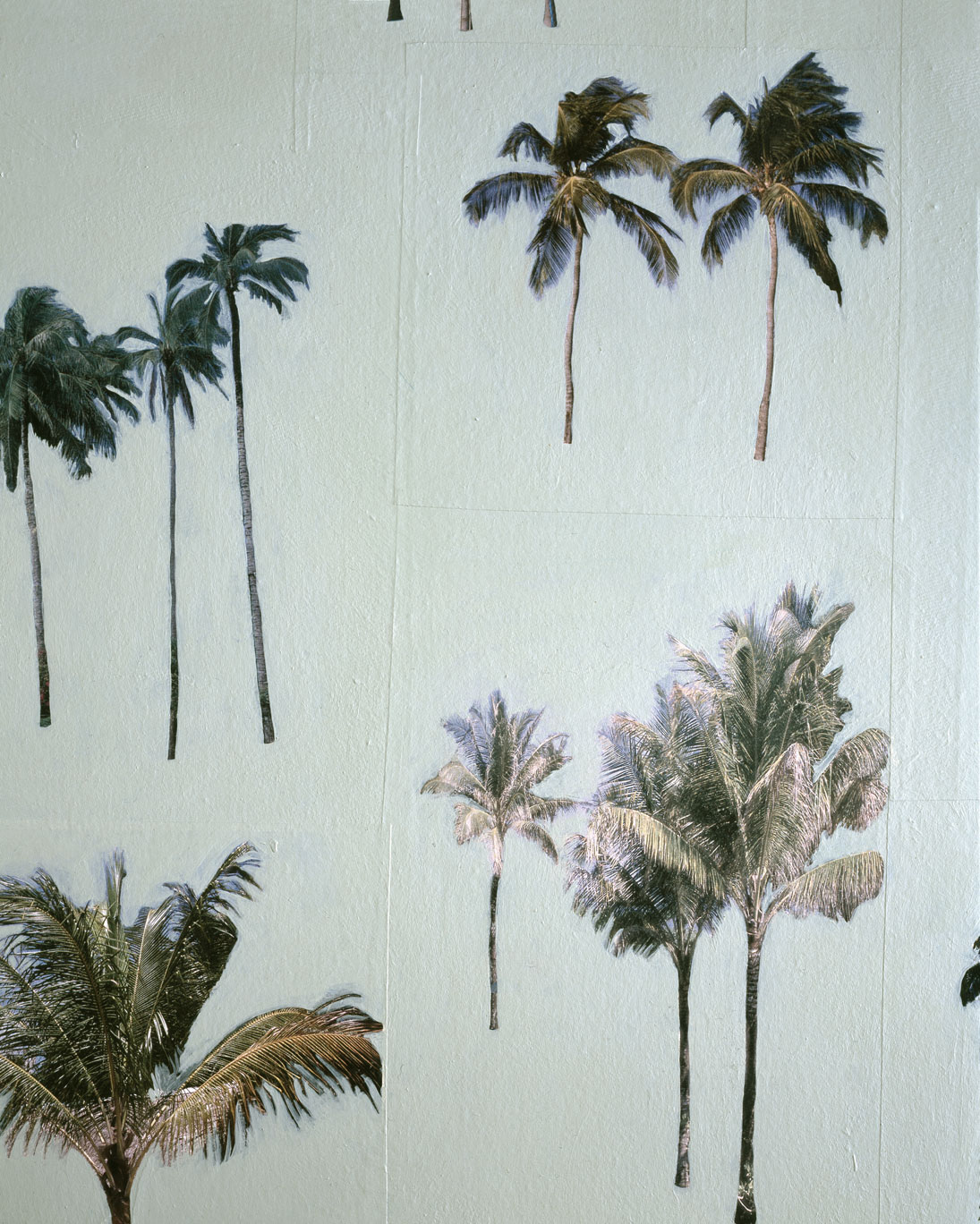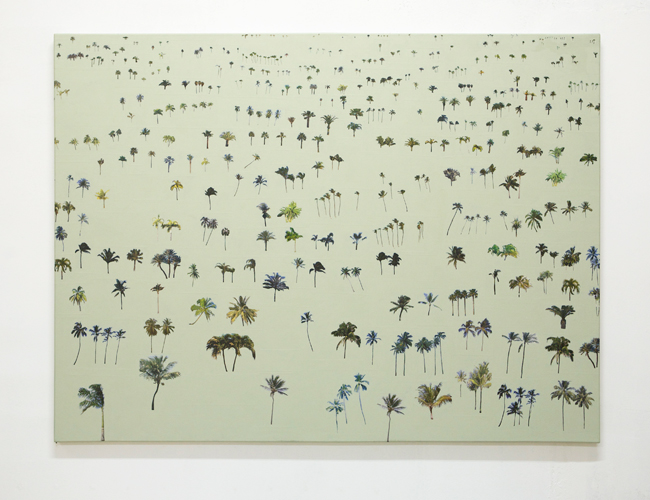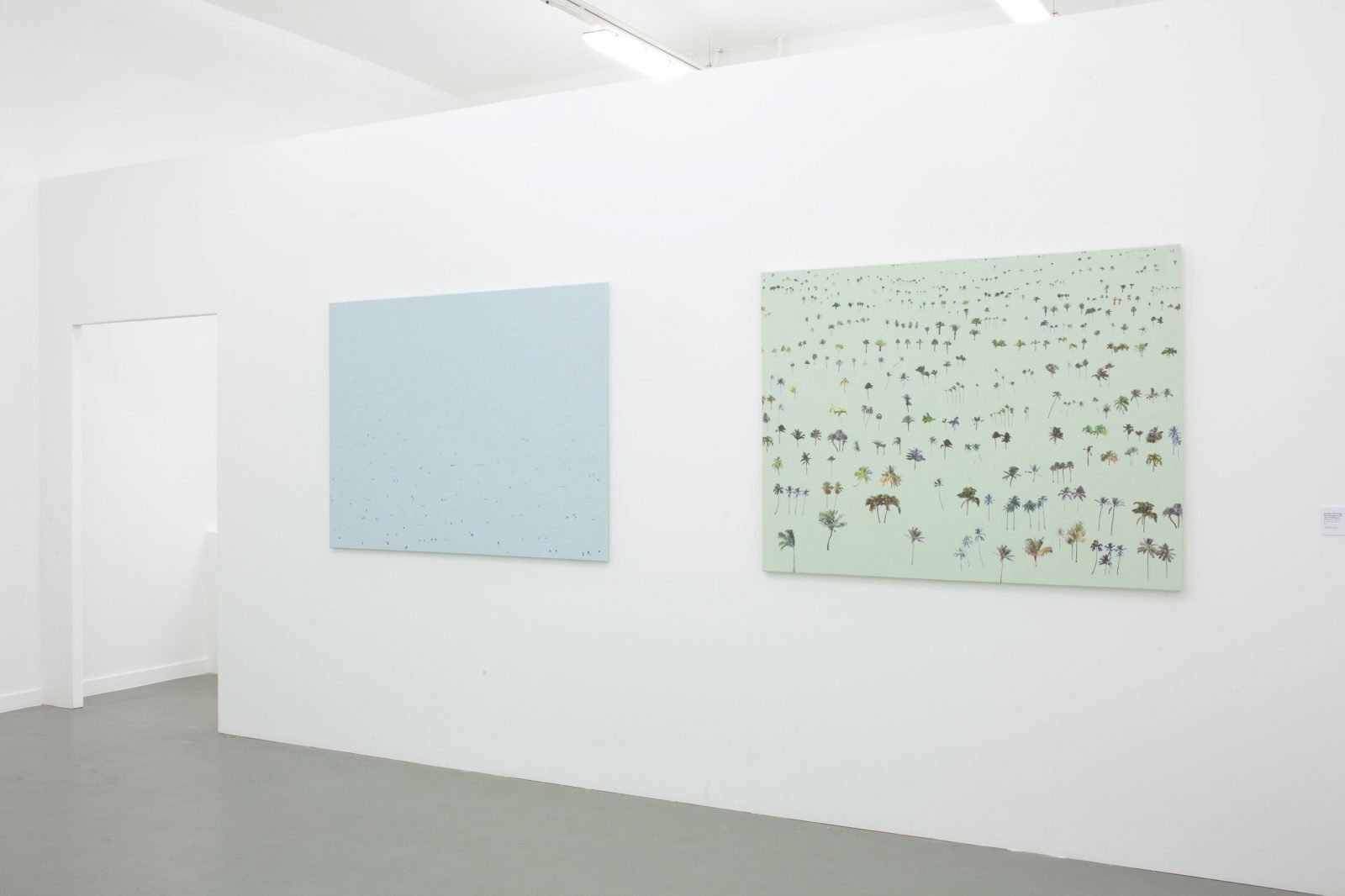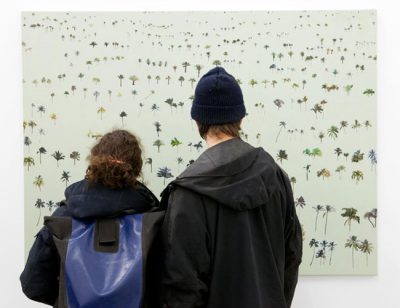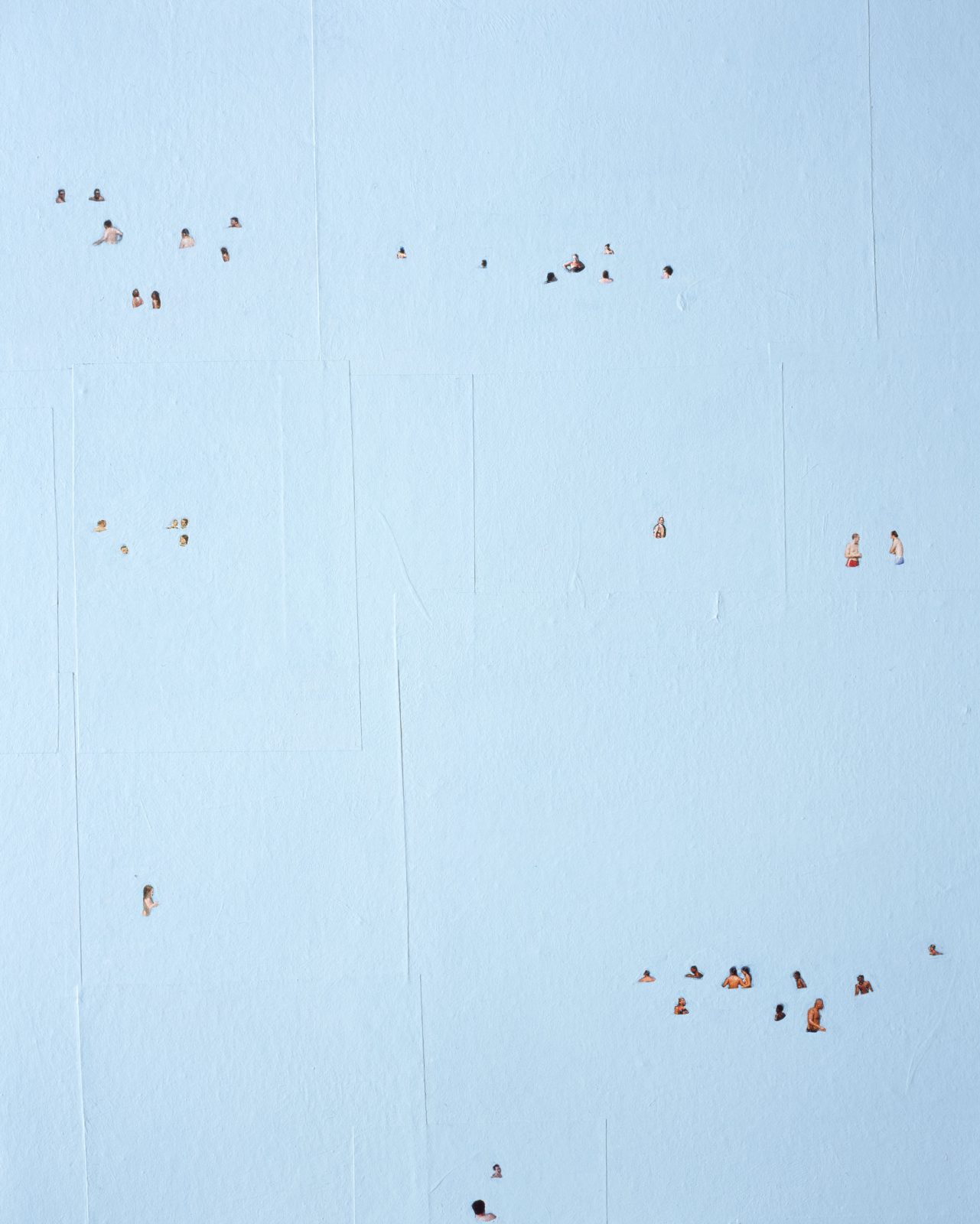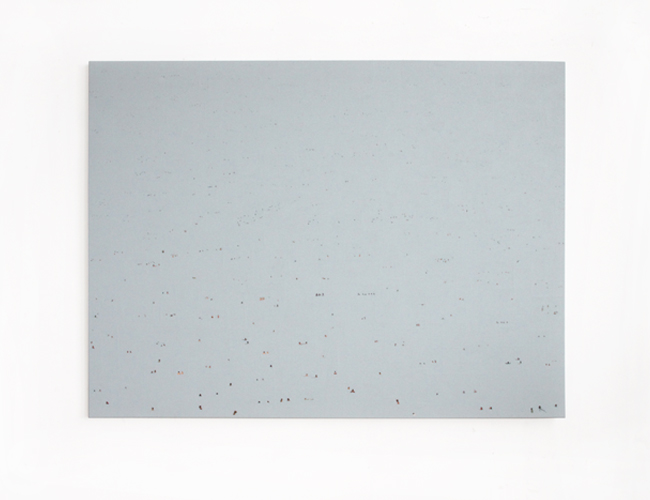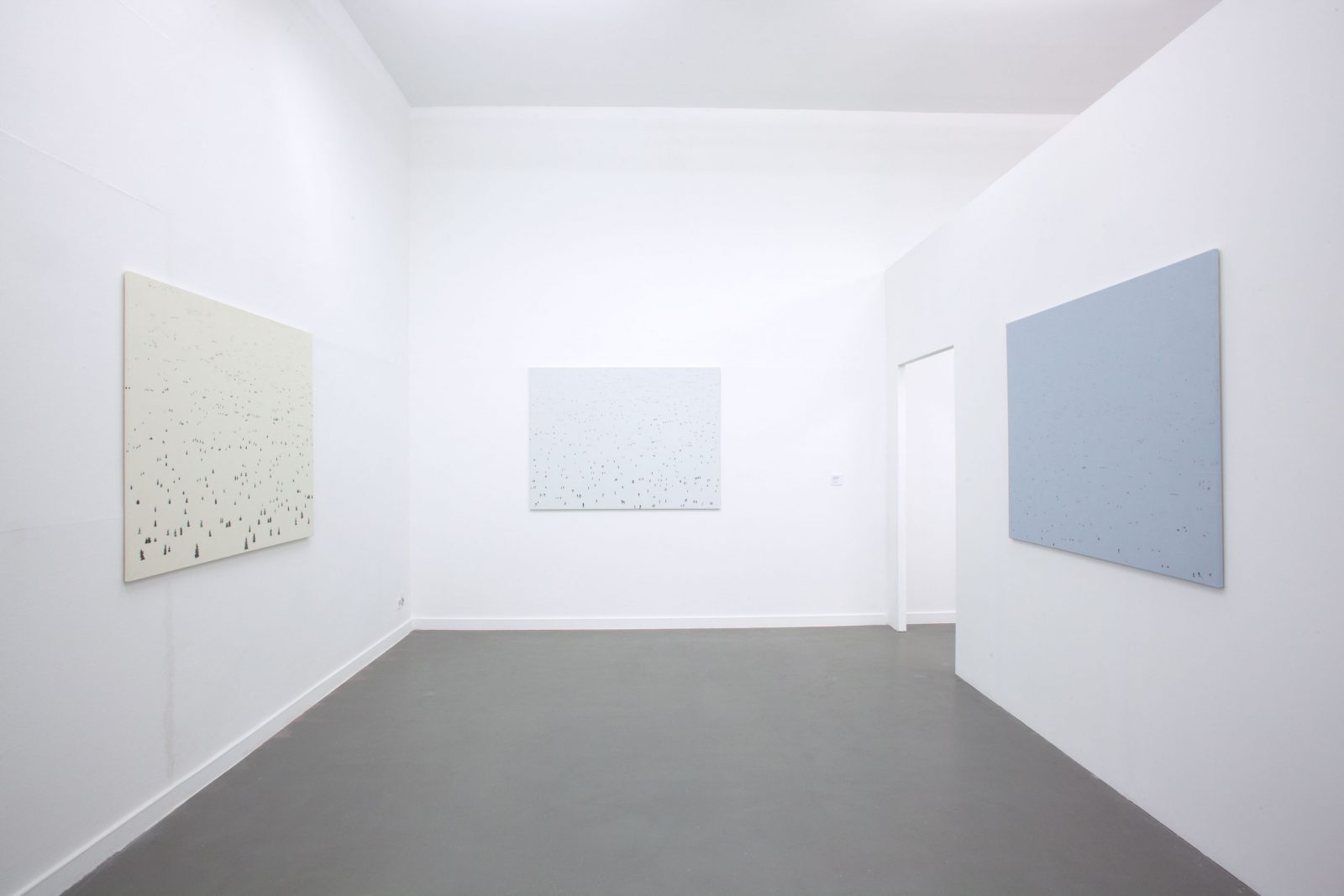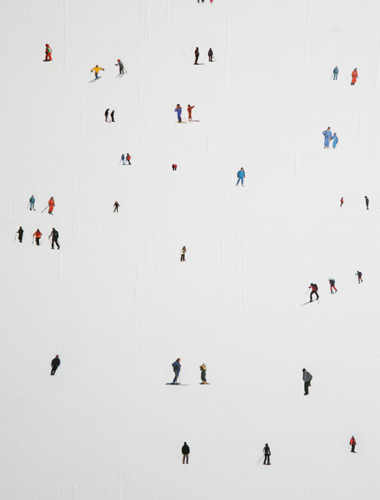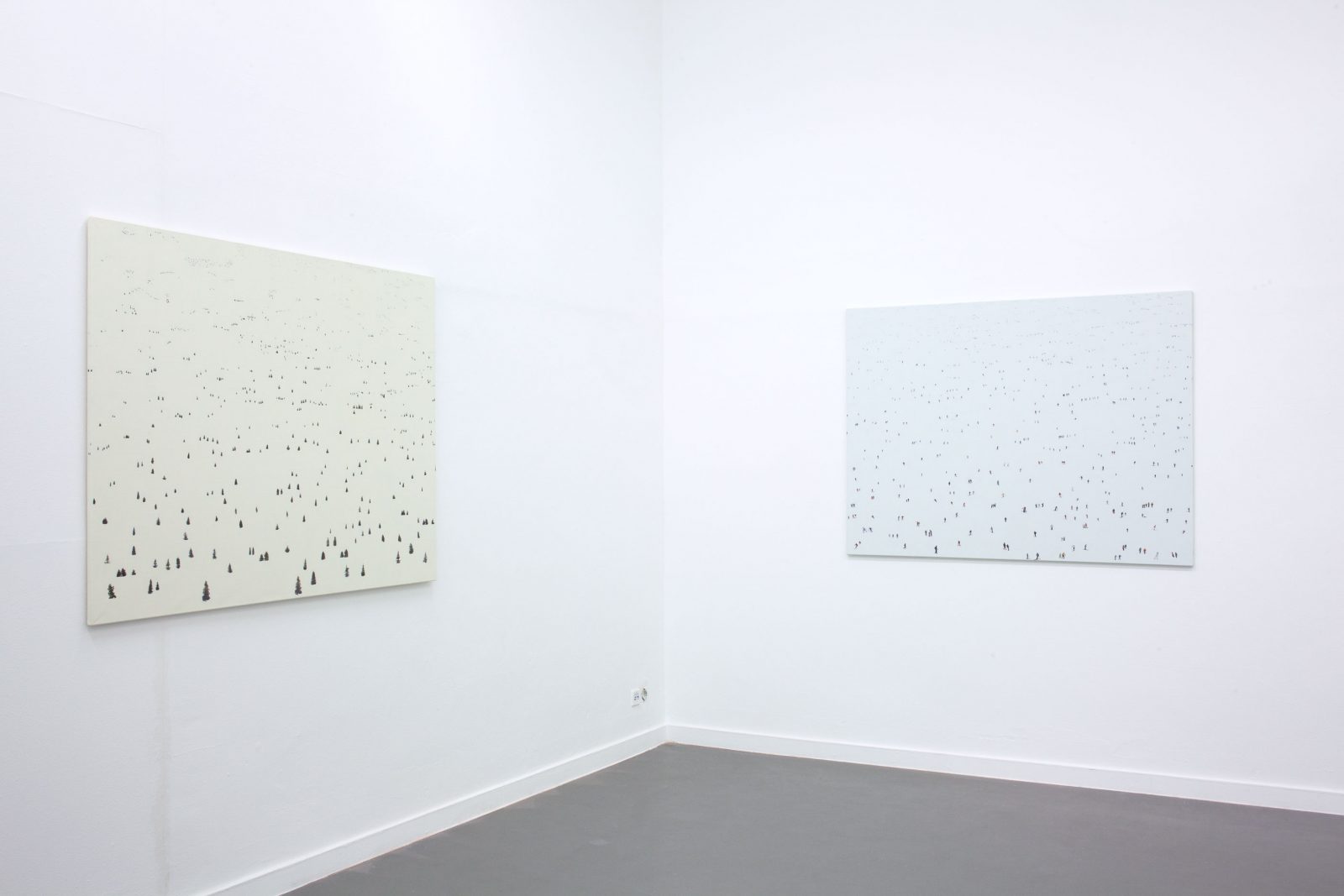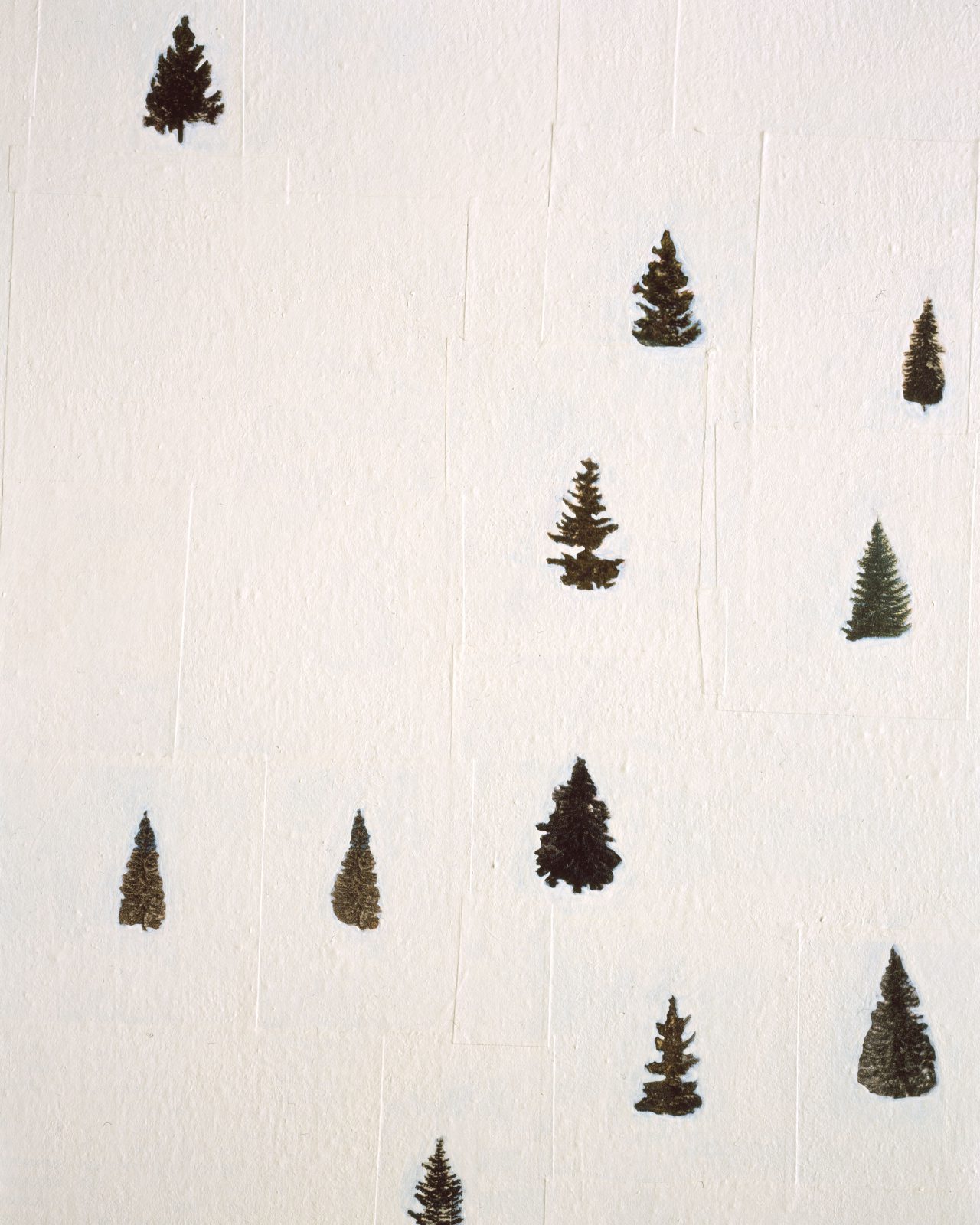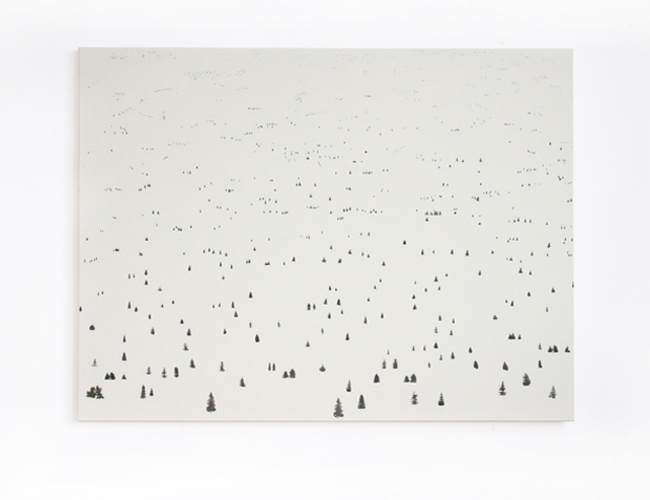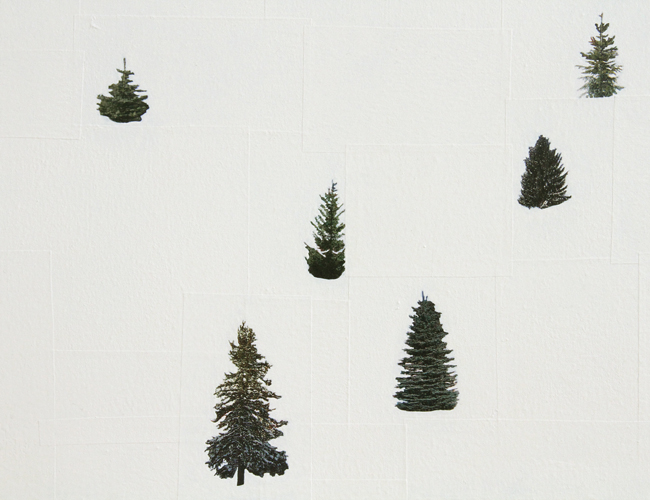TYPOLOGY OF AN IDEAL LANDSCAPE is a series of paintings, each 160 cm wide and 120 cm high. Paper cut-outs from travel brochures are arranged on canvas. These fragments of, for example, palm trees, parasols and skiers, are (partly) painted over with monochrome acrylic paint, thus reconnecting the disparate elements. The layers of paint conceal the original landscape and at the same time create a new one. Working with paint in this way is an artisanal, slow and meticulous process. The landscape created by the overpainting is like falling snow, or like seawater, earth or sky. A common flow of time is created as elements are brought together. In the publication Discovery of the Well-Known (2013), Margriet Kemper writes about the skiers cut out from brochures: “We don’t see individuals anymore, but tiny bodies with which we still share just enough to know that we are one of them.”
A new series of panels in this series is pieced together from fragments of images of rural elements from the former Dutch East Indies, where part of my family history lies. I arranged these typologies, of sugar palms, coffee and tobacco plants, on the canvas before reconnecting them with paint. The paintings and their concealing or revealing representations refer to idyllic facades – from both colonial and present times – behind which devastating social, rural and cultural monocultures are hidden.
TYPOLOGY OF AN IDEAL LANDSCAPE
2011-2020
